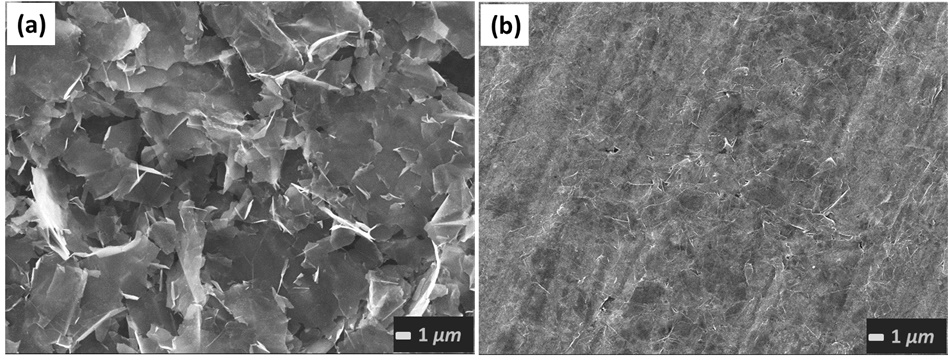The "wonder material" takes an important step toward commercial applications like wearable wireless devices and sensors connected to the "Internet of Things"
From the Journal: Applied Physics Letters
WASHINGTON, D.C., May 19, 2015 – Scientists have moved graphene — the incredibly strong and conductive single-atom-thick sheet of carbon — a significant step along the path from lab bench novelty to commercially viable material for new electronic applications.
Researchers from the University of Manchester, together with BGT Materials Limited, a graphene manufacturer in the United Kingdom, have printed a radio frequency antenna using compressed graphene ink. The antenna performed well enough to make it practical for use in radio-frequency identification (RFID) tags and wireless sensors, the researchers said. Even better, the antenna is flexible, environmentally friendly and could be cheaply mass-produced. The researchers present their results in the journal Applied Physics Letters, from AIP Publishing.
The study demonstrates that printable graphene is now ready for commercial use in low-cost radio frequency applications, said Zhirun Hu, a researcher in the School of Electrical and Electronic Engineering at the University of Manchester.
“The point is that graphene is no longer just a scientific wonder. It will bring many new applications to our daily life very soon,” added Kostya S. Novoselov, from the School of Physics and Astronomy at the University of Manchester, who coordinated the project.
Graphene Gets Inked
Since graphene was first isolated and tested in 2004, researchers have striven to make practical use of its amazing electrical and mechanical properties. One of the first commercial products manufactured from graphene was conductive ink, which can be used to print circuits and other electronic components.
Graphene ink is generally low cost and mechanically flexible, advantages it has over other types of conductive ink, such as solutions made from metal nanoparticles.
To make the ink, graphene flakes are mixed with a solvent, and sometimes a binder like ethyl cellulose is added to help the ink stick. Graphene ink with binders usually conducts electricity better than binder-free ink, but only after the binder material, which is an insulator, is broken down in a high-heat process called annealing. Annealing, however, limits the surfaces onto which graphene ink can be printed because the high temperatures destroy materials like paper or plastic.
The University of Manchester research team, together with BGT Materials Limited, found a way to increase the conductivity of graphene ink without resorting to a binder. They accomplished this by first printing and drying the ink, and then compressing it with a roller, similar to the way new pavement is compressed with a road roller.

Compressing the ink increased its conductivity by more than 50 times, and the resulting “graphene laminate” was also almost two times more conductive than previous graphene ink made with a binder.
The high conductivity of the compressed ink, which enabled efficient radio frequency radiation, was one of the most exciting aspects of the experiment, Hu said.
Paving the Way to Antennas, Wireless Sensors, and More
The researchers tested their compressed graphene laminate by printing a graphene antenna onto a piece of paper. The antenna measured approximately 14 centimeters long, and 3.5 millimeter across and radiated radio frequency power effectively, said Xianjun Huang, who is the first author of the paper and a PhD candidate in the Microwave and Communcations Group in the School of Electrical and Electronic Engineering.
Printing electronics onto cheap, flexible materials like paper and plastic could mean that wireless technology, like RFID tags that currently transmit identifying info on everything from cattle to car parts, could become even more ubiquitous.
Most commercial RFID tags are made from metals like aluminium and copper, Huang said, expensive materials with complicated fabrication processes that increase the cost.
“Graphene based RFID tags can significantly reduce the cost thanks to a much simpler process and lower material cost,” Huang said. The University of Manchester and BGT Materials Limited team has plans to further develop graphene enabled RFID tags, as well as sensors and wearable electronics.
###
For More Information:
Jason Socrates Bardi
American Institute of Physics
jbardi@aip.org
240-535-4954
@jasonbardi
Article Title
Binder-free highly conductive graphene laminate for low cost printed radio frequency applications
Authors
Xianjun Huang, Ting Leng, Xiao Zhang, Jia Cing Chen, Kuo Hsin Chang, Andre K. Geim, Kostya S. Novoselov and Zhirun Hu
Author Affiliations
University of Manchester and BGT Materials Limited
